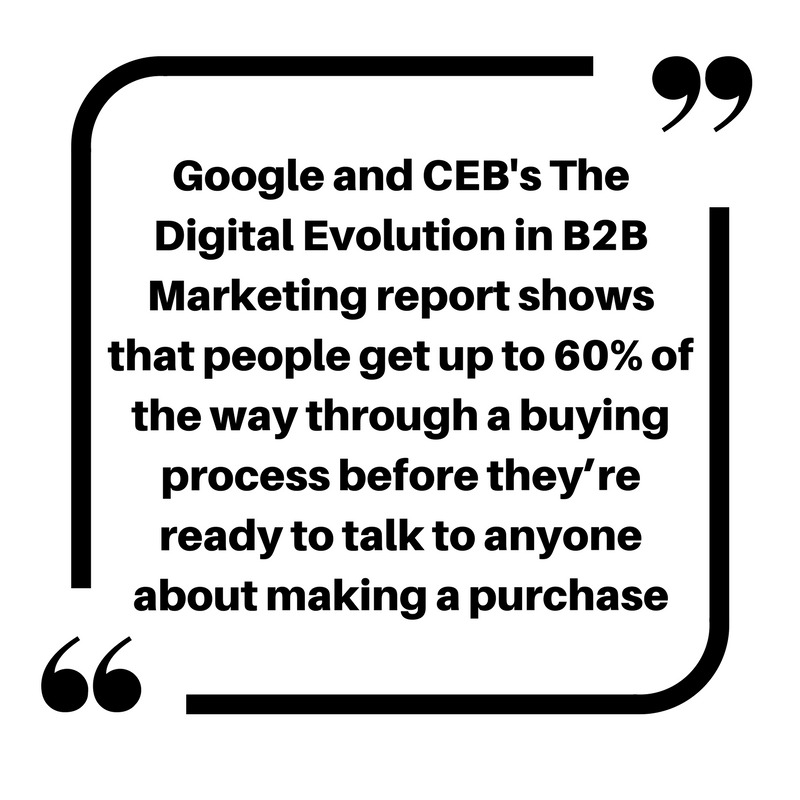
If you’re a marketer, you’ve probably created your fair share of case studies, among other content.
But are your case studies doing their bit for you? Are they generating leads for your business? If you are reading this article, chances are that they aren’t!
Case studies are very powerful pieces of content.
They don’t just narrate another customer’s problem and how you solved it; they provide potential clients insights into the way you approach a problem and its solution, supported by proof points of success. Customer testimonials are the equivalent of user reviews. Case studies take significant effort to create; so it’s important that you make them worth it. So, how can you make them work for you?
Here are 5 ways in which you could make your case studies a veritable lead-generating arsenal:
- Tell the real (short) story
.png) You might feel that your customer story is a great read, but is it definitely going to hook your prospects in, and keep them captivated? A common issue we have seen across case studies it that they tend to talk more about your company than the customer’s problem.
You might feel that your customer story is a great read, but is it definitely going to hook your prospects in, and keep them captivated? A common issue we have seen across case studies it that they tend to talk more about your company than the customer’s problem.
Case studies are meant to be customer focused: it is about their pain points and how your solutions solved them, and helped them achieve their objectives. Share specifics and stick to real numbers; if you just keep singing the benefits song, it’ll get real old real soon!
And keep in mind: everyone is as busy as you. So get to the point quickly, and stay there.
2. Understand your reader
The Domino Project by Seth Godin took the publishing world by storm. The purpose of writing a book was consciously shifted to the reader (the real customer), and away from the bookstore or the publisher.
Similarly, while writing a case study, define its purpose by the person who is going to be reading it: your target buyer persona.
The case study needs to appeal to your target buyer persona. It should spur them into reading it because they genuinely benefit from it; and then they will go on to share it. Better still, it should encourage them to contact you to know more about your work and how you can help them solve their problem.
Research is key here. Take the time to profile your ideal customer, and to understand their buying behaviour. Understand their motivations, their questions, their concerns and their constraints. And only then get around to drafting your case study!
3. Get the timing right

Timing is everything.
Case studies are typically Purchase or Decision stage content. This means that, at this stage, your prospect has carried out some extensive research. He understands his problem, has evaluated the range of solutions, and is now ready to make a decision. An impactful case study could provide that final nudge that makes your prospect a customer.
If you spend some time researching online, you will find that the internet is full of Purchase stage content: case studies, free trials and demos. For your case studies to actually convert leads to customers, they should be mapped to the buyer journey. It’s not all about purchase stage content; the material you put out should have created significant engagement with your prospect buyer persona in their journey leading up to that point of Purchase —aka take into consideration (pun intended!) the content that you create in the awareness and consideration stages of the buyer’s journey. Make sure it leads the prospect to your case study.
4. Include an irresistible offer
Ok, now we have a great case study and your prospect has enjoyed reading it.
What next?
Does your case study end with an offer or a clear Call to Action (CTA) that will prompt your prospect to take that next step towards becoming a lead or a customer? There is very little achieved if your prospect reads the case study and then leaves without a trace. This is where a good offer comes in. A good offer is high-quality content that is aligned to your business’ product or service, and is meaningful to your prospect in the buying cycle. The offer should be so valuable to your prospect reading the case study that they share their email ids and contacts in return for the benefit of the offer.
Typical purchase stage offers that can be included in case studies are ‘Free trial’, ‘Sign up for a Demo’ or ‘Get Free Samples’.
5. Make your case studies easy to find
Understand how—and where—your prospect spends their time doing research. This is key to making sure they find your case study when they are looking for it.
Optimizing the case study for the right keywords is the first step. Once the content has been optimized for keywords, distribute it on all relevant channels. Make it easy to find the content on your website. Promote it using social media channels, write a blog about it, share a video or two, and use emailer marketing to get it to your mailing list.
Paid promotion and distribution of the content on the various social media channels while precision targeting your audience is very effective, and necessary. Remember, you can always re-purpose parts of your case study to suit the requirements of your promotional channels.
Found these tips useful? We have more practical tips you can use to make your content the lead-generating arsenal it can, and should, be!
– Co-Authored by Aarthi Srinath & Mangala Ramamoorthy
Aarthi: Politically Agnostic Marketer. Chronic Multitasker. Workoutaholic. Cyclist. Mom.
Mangala: Marketer. Communication Specialist. Former Journalist. Foodie & Movie Buff. Doting Mom












